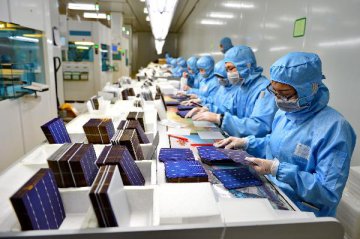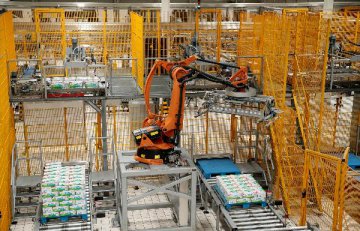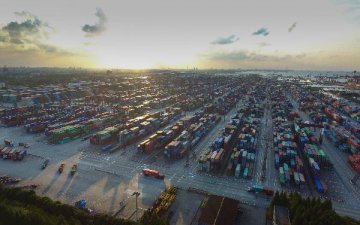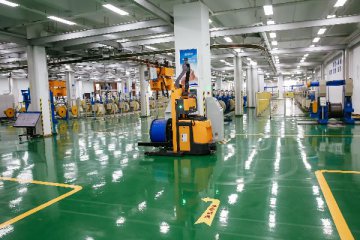
China’s foreign direct investment (FDI) is estimated to have increased by 6 percent to 8 percent in 2018, which is significantly higher than the level of the past two years, according to Li Dawei, researcher with Academy of Macroeconomic Research, a thinktank under the National Development and Reform Commission.
Thanks to the support of a series of policies released by the central government in the second half year, such as introducing negative list for market access nationwide, the use of foreign capital jumped 10.9 percent in the July-October period, more than doubling the growth in the first half year, which was 4.1 percent.
The researcher predicted that China’s FDI is expected to continue to maintain a growth of 5 percent to 10 percent in 2019, along with the further release of the effectiveness of China's opening up. Investment will mainly flow into the fields of automobiles, general equipment, dedicated devices, and commercial services sectors.
Tech-intensive manufacturing is the main drivers of foreign investment growth
With the improvement of China's economic development, foreign capital flowing into China has gradually shifted from traditional processing and assembly and real estate sectors to high value-added sectors, such as high-tech manufacturing, technology research and development, information services, and commercial services.
Since the beginning of 2018, China’s FDI was mainly injected the fields of high-tech manufacturing and modern service industries.
According to the Ministry of Commerce (MOC), FDI into the Chinese mainland from January to November reached 121.3 billion U.S. dollars, up 1.1 percent year on year. FDI in November fell 27.6 percent year on year to 13.6 billion dollars. The MOC attributed the monthly decline to a high base of comparison in the same period last year.
In the first three quarters of 2018, FDI inflows into specialized equipment manufacturing, communication equipment and computer manufacturing increased by 20 percent and 50 percent year on year respectively, driving the use of foreign capital in manufacturing up 13 percent year on year, which reversed the downward trend of foreign capital flowing into the manufacturing.
Meanwhile, the country's pilot free trade zones saw a year on year increase of 34.6 percent in the number of new overseas-funded enterprises during the period, with FDI up 10.4 percent.
Investment from the UK surged 198.9 percent year on year, the fastest among China's major investment sources, while investment from countries along the Belt and Road routes posted a growth of 14.9 percent.
China’s continuous efforts in improving business environment
The year of 2018 marked the 40th anniversary of its reform and opening-up, which China commemorated with concrete moves to overhaul and reform its economy.
The country unveiled a series of measures to broaden market access, improve the investment environment, and increase imports last year.
Opening-up has revved up in the domestic finance sector. China launched the trading of crude oil futures contracts in Shanghai, the first futures contracts listed on China's mainland to overseas investors. Foreign firms have been given the green light to have 51-percent ownership of their brokerage ventures. Foreign investment access was also eased in the insurance industry.
UBS AG, for instance, became the first global financial institution to take advantage of the country's new rules to gain a majority stake in its securities joint venture in the Chinese mainland, raising its stake in UBS Securities Co. to 51 percent from the current 24.99 percent.
"The further opening-up of China's financial sector represents great opportunities for our wealth management, investment bank and asset management businesses," said UBS Group CEO Sergio P. Ermotti.
MOC data showed that a total of 54,703 new overseas-funded companies were established in the first 11 months of 2018, up 77.5 percent year on year.
Foreign enterprises such as BASF Group, Tesla, BMW and the Royal Dutch Shell have expressed their bullish attitude towards doing business in China and some have expanded their investment here, thanks to the country's endeavor to create a fair business climate.
Also in 2018, the landscape of China's pilot free trade zones (FTZs) has been further broadened with the southern island province of Hainan being designated as the latest and largest pilot FTZ, a move to further open the country's market and to attract foreign investment.
Reform and opening-up has gained pace. In its latest step, China announced on Dec. 25 a negative list for market access that is shorter and applies to all market players, allowing them to equally enter sectors that are not on the list.
China’s FDI expected to continue growth in 2019
China’s FDI is expected to maintain a growth of 5 percent to 10 percent in 2019, along with the further release of the effectiveness of China's reform and opening up.
In 2019, China will continue to widen market access for foreign investors, while the negative list for foreign investment is expected to be further shortened in 2019, said Tang Wenhong, head of foreign investment management department under the Ministry of Commerce.
The MOC will also push for the lifting of market access restrictions on foreign investment in sectors that are not on the negative list to level the playing field for Chinese companies and foreign enterprises.
The country vowed to push forward reforms in various fields including state-owned enterprises, taxation and financing, land, market access as well as social management.
























Latest comments